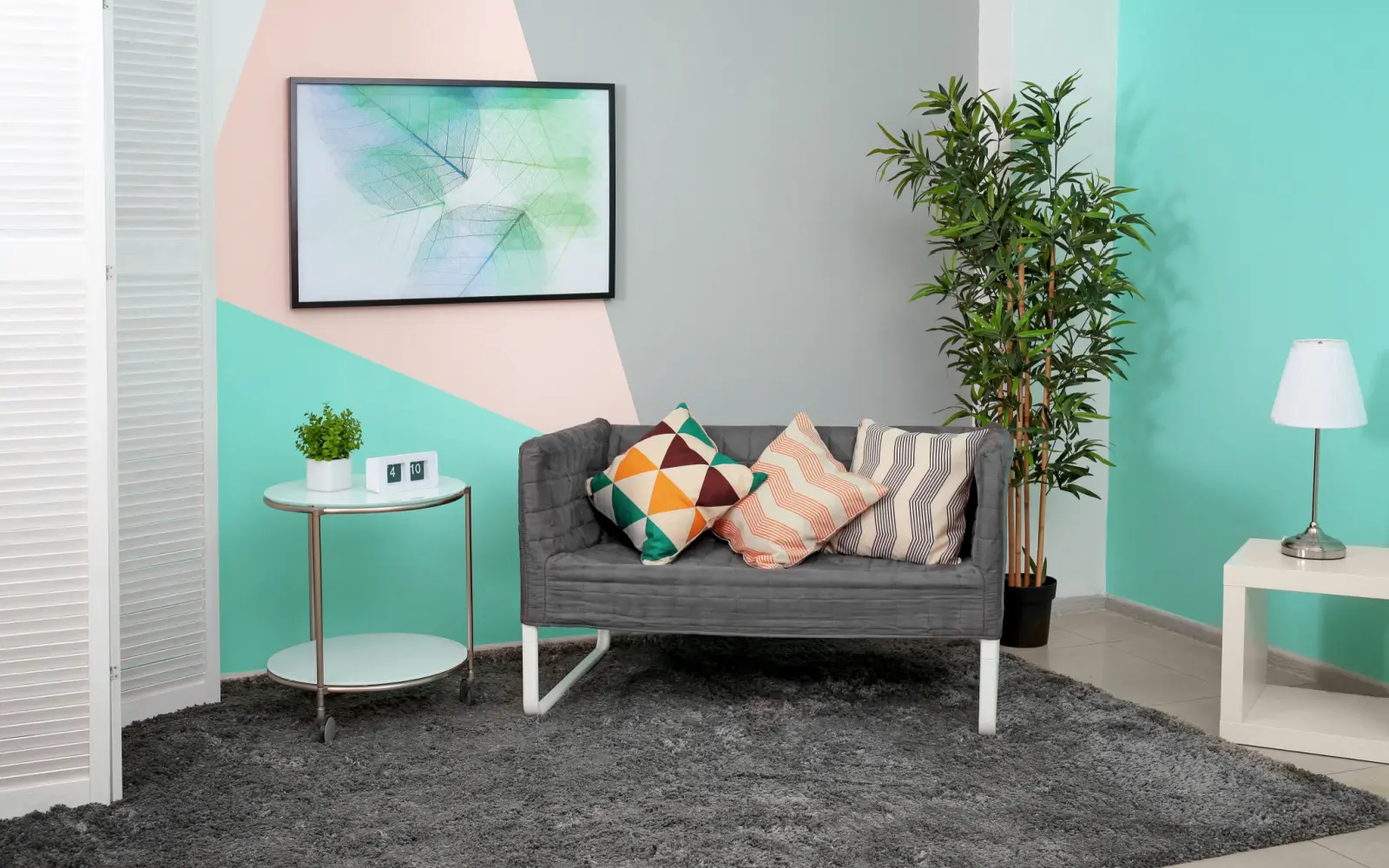Turquoise is a gorgeous blue-green naturally occurring mineral. Artists, designers, and royalty have used its beguiling pigment for generations.
If you’re interested in using this stunning color in your own designs, you may need to know colors that go with turquoise to complete your look.
What Colors Go With Turquoise?
Turquoise is an exceptional color for many reasons, but one of the best is its ability to coexist with other hues.
Whether you intend to use this color for an outfit or the interior of your home, turquoise looks fantastic. But how do you decide which colors will best suit your needs?
Take a closer look at how these color combinations fit together to get a clearer picture.
1. Green
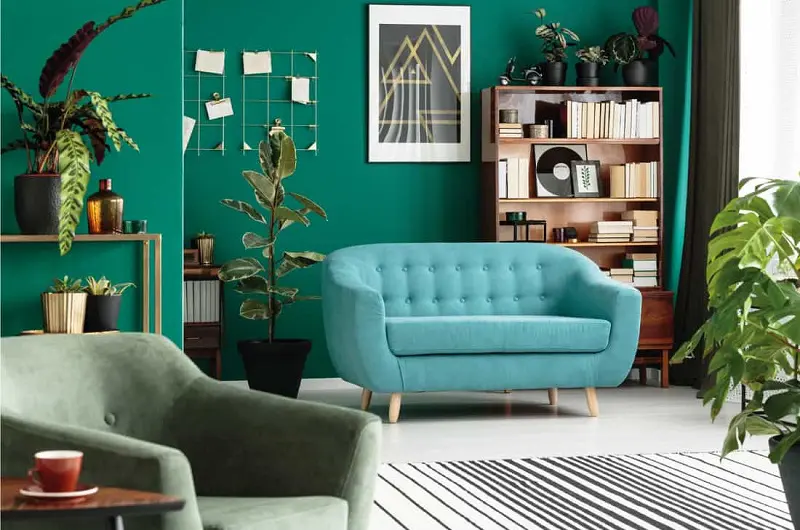
Photographee.eu/Shutterstock
Turquoise combines blue and green, so it’s naturally a friend of other shades of green, notably darker tones.
Try pairing it with forest green for a refreshing setting.
If you prefer warmer greens, you’ll be pleased to find turquoise looks great with these, too!
Accompanying turquoise with warmer colors can help bring out the yellow hiding in its depths.
2. Blue
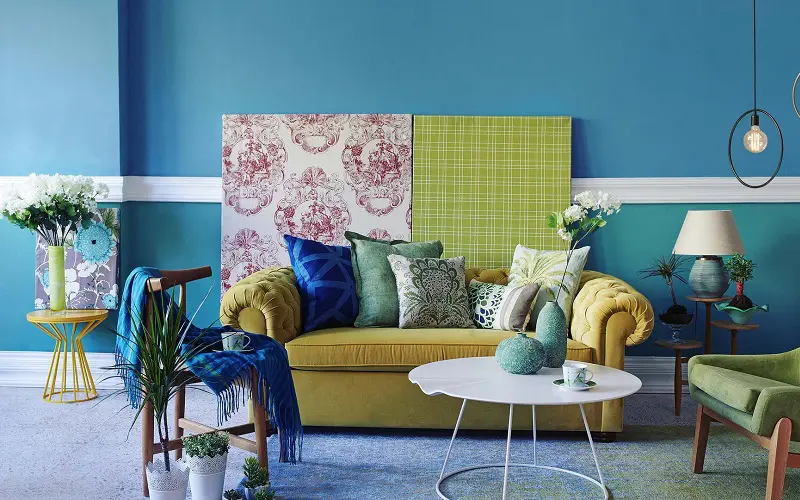
united photo studio/Shutterstock
Like green, blue is the other color that helps create turquoise’s relaxing complexion.
Putting it next to turquoise is guaranteed to have a calming effect and remind one of serene waves or cloudless skies.
A dark, royal blue will give turquoise a mysterious depth. Meanwhile, a light blue will lend turquoise a cool, icy edge.
There aren’t many shades of blue that won’t find a place next to turquoise.
3. White

Photographee.eu/Shutterstock
White is the ideal companion to turquoise if you want to bring to mind ocean waves.
Who doesn’t love to admire the blue-green sea speckled with frothy white waves?
White looks especially dazzling next to turquoise. Pick white to create a clean look without losing any natural charm.
4. Gold
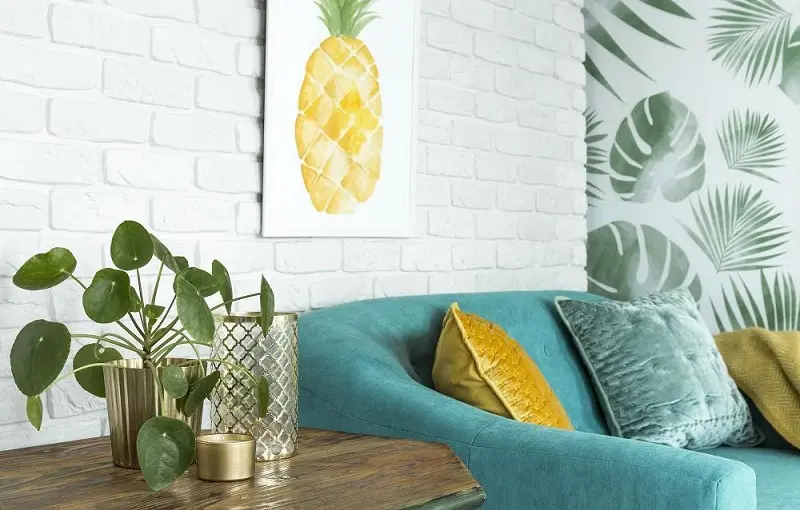
Photographee.eu/Shutterstock
Like turquoise, gold is a natural substance created by the earth. Only, in this case, it’s a soft metal.
Gold’s shine and sparkle are right at home next to the regal appearance of turquoise.
Gold is a popular pick if you’re looking for a touch of fanfare that will bring out the brilliant tones of turquoise.
Focus on adding it to metal surfaces where it will look natural.
5. Copper
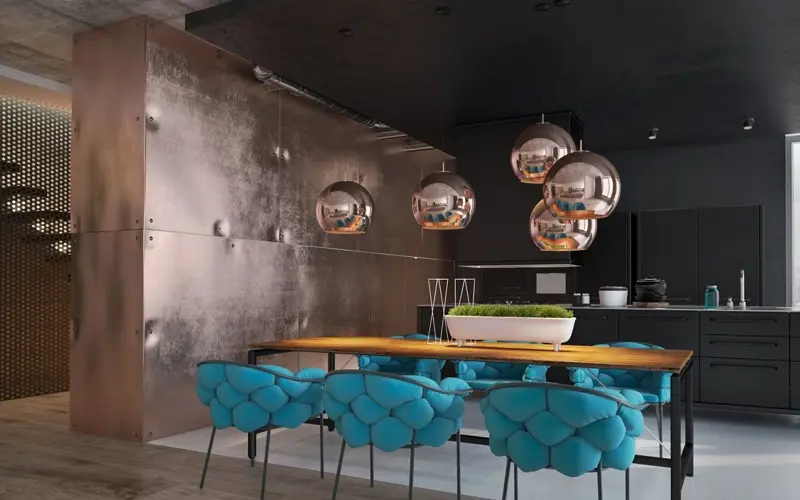
Image/Pinterest.com
Copper is a great companion for turquoise. Like gold, this metal helps bring out yellow undertones in turquoise, giving it a warm, bright feel.
Copper is also easily placed throughout the home or added to an outfit.
Anything that is metal will look great in copper. Try adding it to light fixtures or door handles.
6. Silver
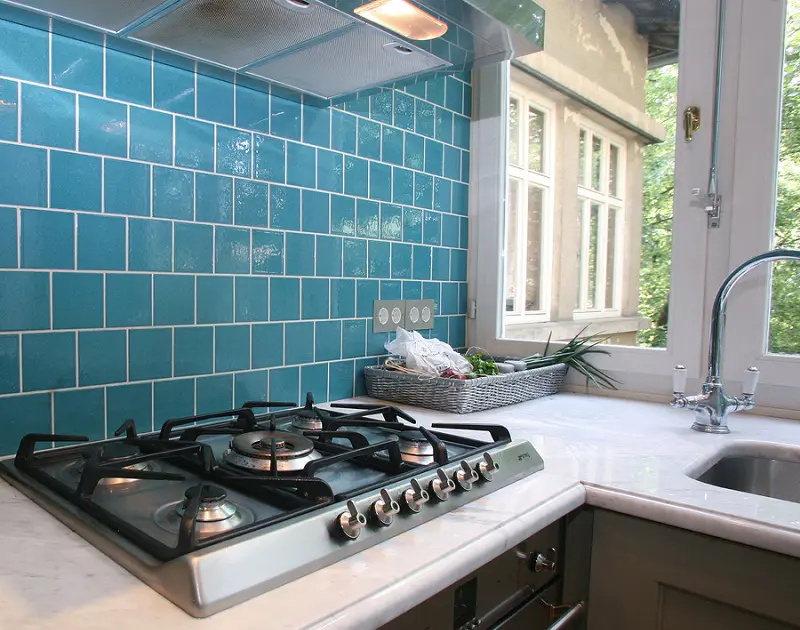
paul prescott/Shutterstock
It is common to find turquoise set in silver or plated jewelry. This fact isn’t surprising, considering how well silver sets off the rich tones of turquoise without imposing any distracting use of its own.
Fortunately, adding silver to your aesthetic isn’t difficult. Silver and silver-plated metal are popular choices for many modern decors.
Try adding turquoise to your kitchen or bathroom to test it alongside silver appliances such as faucets and other kitchen appliances.
7. Pink
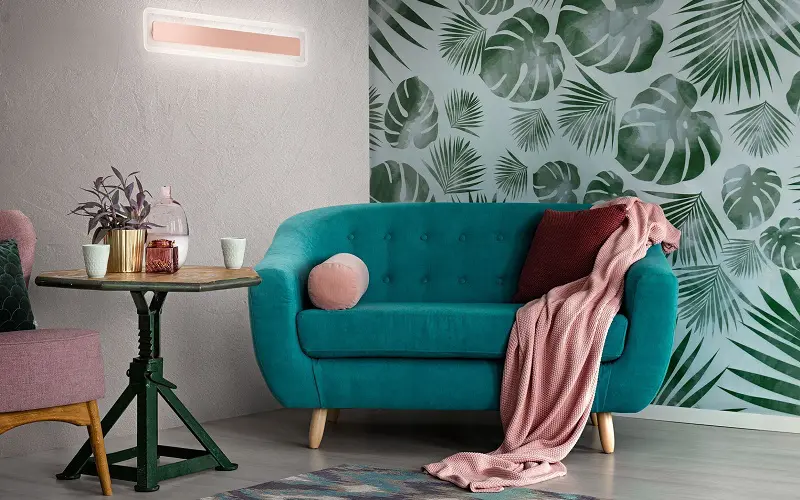
Photographee.eu/Shutterstock
Pink may seem like an unconventional color to pair with turquoise, but they happen to get along quite well.
Next to the blue-green blend, pink is a bubbly, exciting companion. This is an especially good combination if you choose pink with some yellow in it, like coral.
These bright colors mirror the improbable palette of the reef or sandy beach. This combination is beautiful in a beach house.
8. Orange
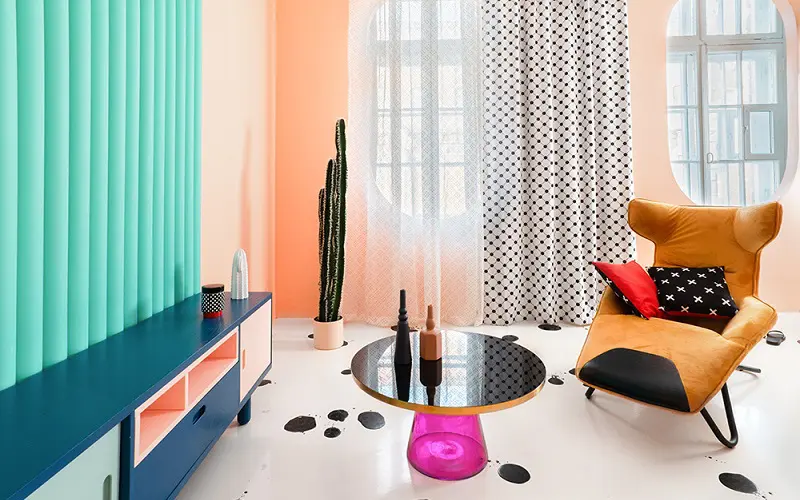
thelavrova/Shutterstock
For a vibrant, striking pairing reminiscent of bright autumn days, put turquoise next to orange.
You’ll be surprised at how well these colors work together, despite the fact that it may seem unusual.
Orange is the perfect color to set off the warmth sitting beneath the surface of turquoise. Picture leafy branches and an October sky.
9. Purple
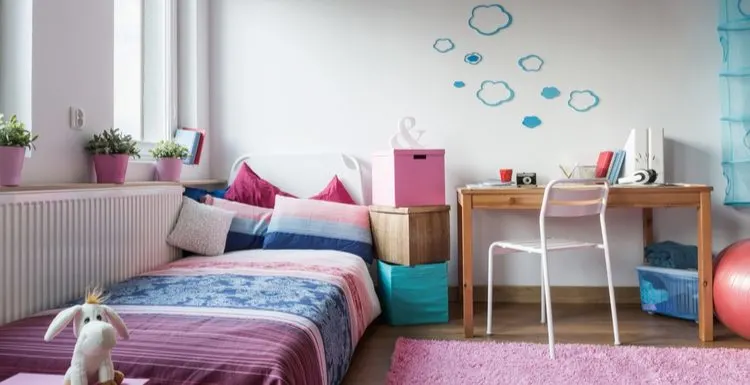
Photographee.eu/Shutterstock
Purple is a moody, unfathomable color that creates a mysterious setting next to turquoise.
Because they share similar traits of both cool and warm pigments, this pairing creates the illusion of several colors, although it’s just two.
For a magical aesthetic sure to enchant the imagination, turquoise and purple are hard to beat. Consider adding dendrobium orchids to complete the look.
10. Mustard Yellow
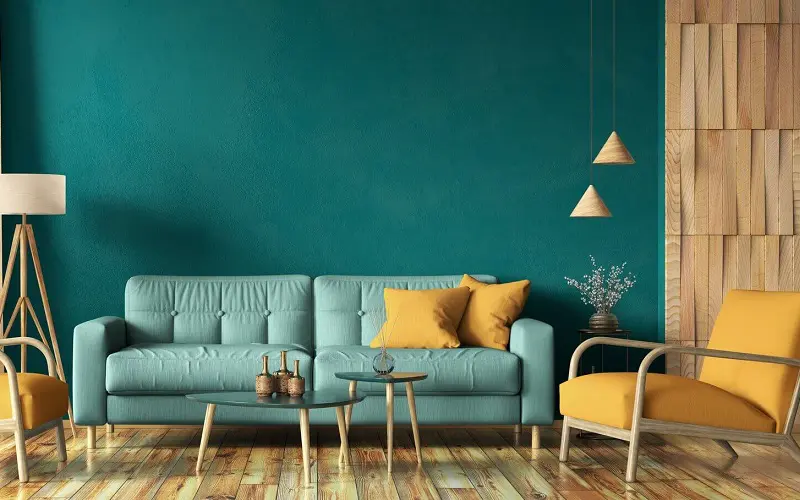
Turkuaz Görsel/Shutterstock
Mustard yellow is a favorite among retro-lovers. Next to turquoise, this sunny hue takes on a playful, stylish air.
Although mustard yellow is hardly ever a fan favorite, it gets a fashionable boost from the relaxing presence of turquoise.
It’s tough not to enjoy the combination in a brightly lit kitchen or swanky sitting room.
11. Gray
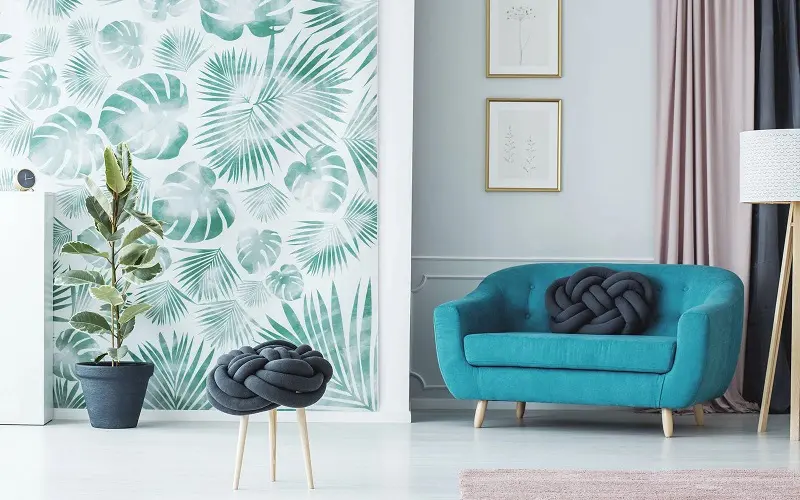
Photographee.eu/Shutterstock
For a calmer atmosphere, consider pairing turquoise with gray. Together, turquoise and gray are the chic, relaxing makeover your bedroom or office needs.
Typically, cool grays will pair better with turquoise, but don’t be afraid to test them against a warmer gray.
Lighting can make a big difference in how neutrals, such as gray, appear.
Things to Consider
Let’s look at a few things to remember when considering what colors go with turquoise.
- Learn how to identify complementary colors, as this can help you determine which colors will look good when paired together. On the color wheel, complementary colors are opposite one another, and how different they are from the original shade or tint determines the contrast.
- Consider larger color combinations. Often, color schemes look best when they include several different complementary colors. Turquoise, white, and gold, for example, are perfect for creating a stately atmosphere.
- Get inspiration where you can. Look online, pick up some swatches from the store, or try pairing your favorite turquoise jewelry with different outfits. The possibilities are endless when it comes to turquoise.
- Be cautious with bold color schemes. If you want to combine turquoise with another bold color choice for your home decor, make sure it’s one you’ll like for an extended period of time. Turquoise and mustard yellow are an incredible combination, but changing out all of your throw pillows and sofa covers can be a drag if you get tired of it.
- Choosing a color to go with turquoise is all about picking what combinations look best to you. Take advantage of this hue’s easy-to-match pigments and see what pairs are most appealing.
Frequently Asked Questions
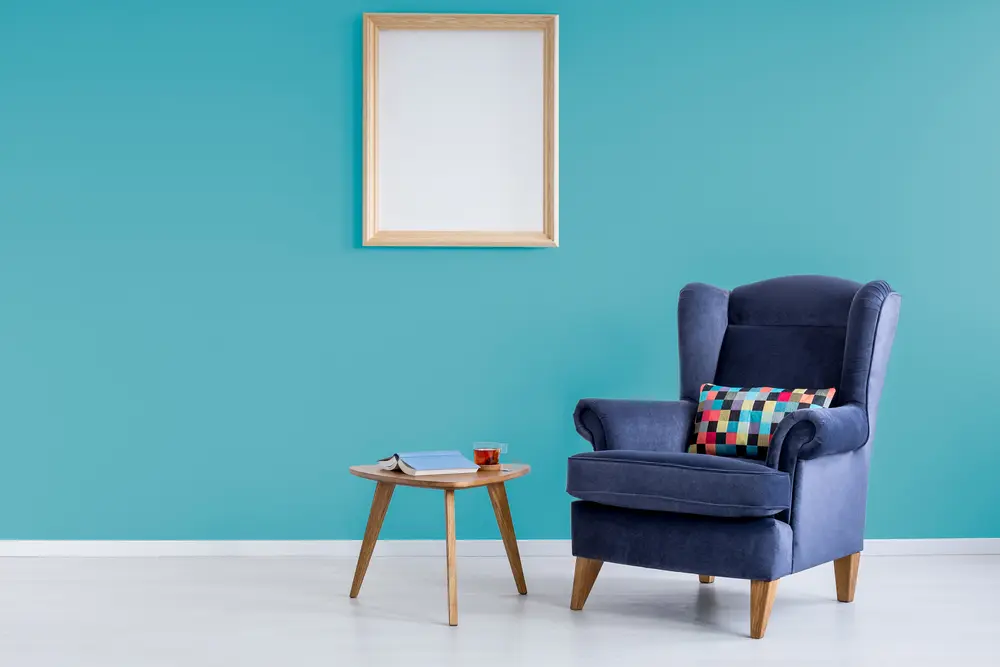
Ground Picture/Shutterstock
Turquoise is an exciting color with historical significance. Check out these frequently asked questions by other people fascinated by this blue-green mineral.
Turquoise Shade Names
Just like most colors, turquoise comes in many different shades. Often, pairing a color with its varying shades can create an ombre effect that’s pleasing to look at.
If you want to produce this uniform cascade of color with turquoise, here are the names of some a few shades of turquoise: Aqua, teal, cerulean, seafoam
What Does Turquoise Symbolize?
Most experts believe the Egyptians first discovered Turquoise. This gorgeous blue-green stone has been coveted ever since. Many cultures believe turquoise brings the possessor health, fortune, and protection from evil.
Since the early days of its discovery, turquoise has gone on to find a special place in the hearts of people all over the world. When it made its way to the Native American tribes, they regarded it as a ceremonial gem and was valuable enough to use as a medium of trade. Tibet has even adopted it as their national stone.
This chameleon of stones can range in color from light blue to emerald green. Many people consider the light blue stones to be the most valuable, and it gets its pigment from the additional copper in the stone.
Why Does Turquoise Turn Green?
If you have turquoise jewelry or decor, others may have warned you not to get your turquoise wet, and this is for a good reason. This mineral comes from compounds made up of copper aluminum phosphate.
This means it oxidizes when exposed to water and the oils found on your skin. Just like iron rusts, turquoise will slowly change over time. Although some find this change desirable, you may want to prevent your turquoise from changing color.
In order to keep it the cool, blue-green pigment of its youth, you’ll need to find turquoise that’s stabilized in a sealant. This will stop moisture and oil from reaching the surface of the mineral.
Where Is Turquoise Found?
Turquoise is a stone that is mined and usually found in hot, dry places. Most of the mines in North America are found in the southwest. Arizona and Nevada have the most plentiful deposits, although there are several mines in California, New Mexico, and Colorado as well.
Some of the best places to find turquoise in other parts of the world include Persia, Egypt, Mexico, and Northwest China. Although, the stone itself is not the only place you will discover turquoise.
The color itself is sprinkled all over our incredible world. Everything from the sea and the sky to fish and peacock feathers adorn themselves in turquoise. You may even find it on the iridescent wings of a butterfly.
Is Turquoise a Birthstone?
Turquoise is one of a few birthstones that represent the month of December. Offering a December baby turquoise is a great way to communicate your love and goodwill.
In addition to turquoise, blue topaz and Tanzanite also represent the year’s final month. Although the stones are all subtly different, they share the common trait of being different shades of blue.
Why Is It Called Turquoise?
Turquoise got its modern name from the French and is simply a reflection of its origins. While it was in transit to the west from Turkey, the French people referred to it as “Pierre turquoise” or “Turkish stone.”
Other cultures tend to think of it a little differently, however. The Native Americans often referred to it as “the sky stone.”
Is Turquoise a Warm or Cool Color?
Turquoise seems to be in an interesting dilemma regarding whether it’s a warm or cool color. This will depend mostly on which shade of turquoise you prefer.
Blue is a cool color and makes up a lot of the complexion in turquoise, so many people regard it as a cool color. On the other hand, green is a secondary color made from blue and yellow.
This means that the blue in turquoise is cool, and the yellow from the green is warm, leaving turquoise in a conundrum. This ambiguity is what makes it easy to pair with others. Use it to your advantage by setting it next to colors you wouldn’t normally expect.
Closing Thoughts
Turquoise is an amazing color that takes advantage of both cool and warm tones. It is rich in pigment, giving it a royal, superior feel while still holding onto its playful energy.
Add some turquoise to your everyday life, find the perfect color to match, and show off your personality.
So, what are you waiting for? Grab yourself some turquoise decorations or paint today!

